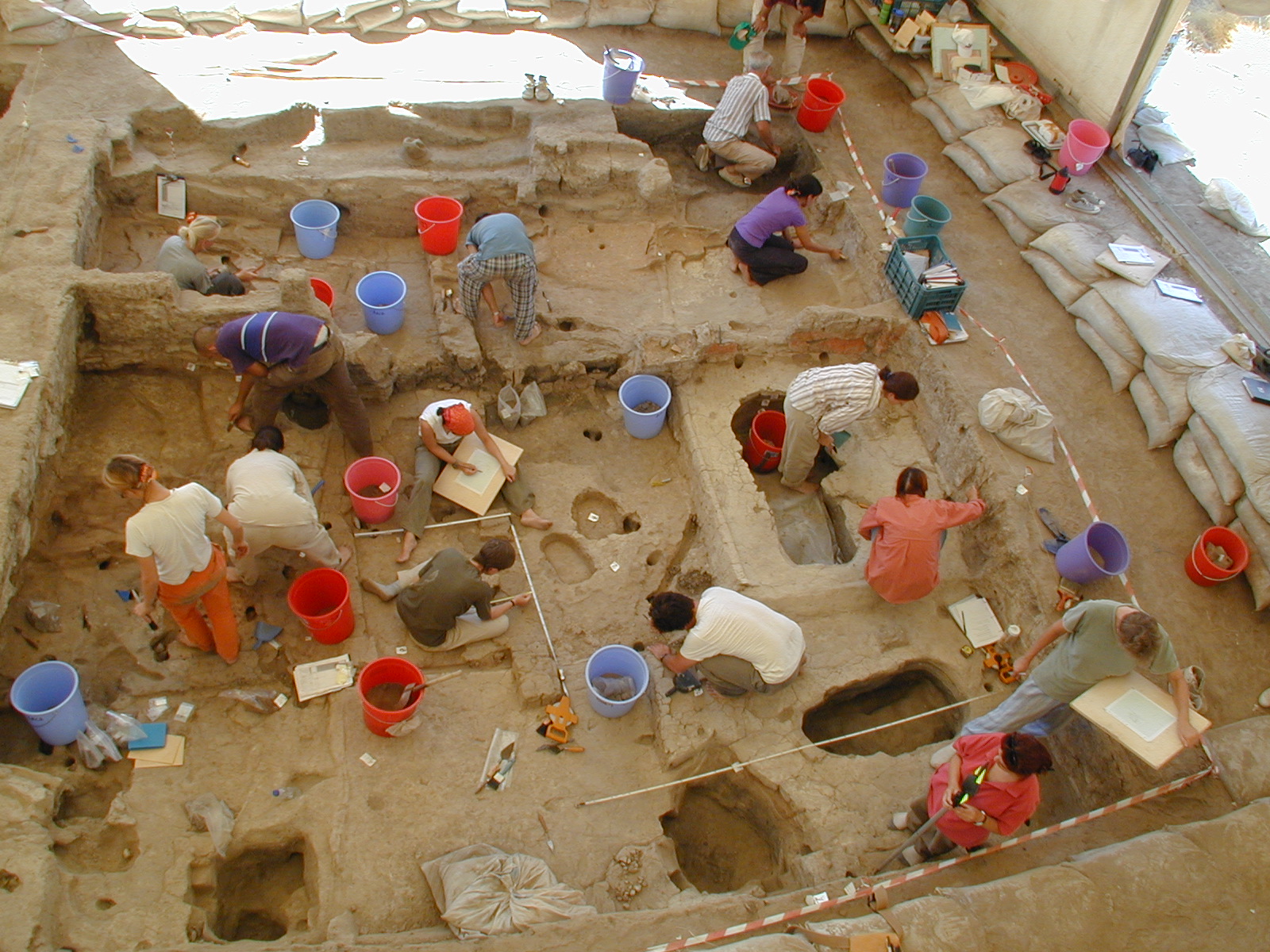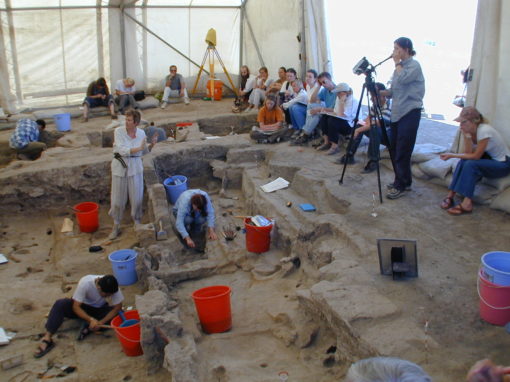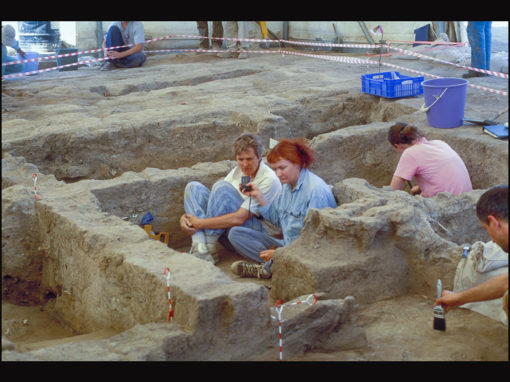
Last House on the Hill: BACH Area Reports from Çatalhöyük, Turkey (Çatalhöyük vol.11) (2012)
edited with Mirjana Stevanovic
The 327,000 words manuscript was submitted for publication to the Cotsen Institute of Archaeology, UCLA in May 2009. The volume comprises 22 chapters written by 25 authors, 602 figures, plus tables and bibliography. The project was carried out under the umbrella of the Çatalhöyük Research Project, directed by Ian Hodder, Stanford University. Ruth Tringham was the Principal Investigator of the project that was funded by the National Science Foundation and private gifts. Dr. Mirjana Stevanovic was the field co-director (along with myself) and is the co-editor of this volume. Mirjana Stevanovic took the lead of communicating with authors and nudging our authors to finish their chapters. She also took the lead in synthesizing our joint excavation reports from the seven years of fieldwork and discussions of the two study seasons into the summary and excavation chapters (chapters 2 and 4 respectively). I took the lead in the editorial process, in addition to writing the preliminaries such as preface and acknowledgements, the introductory texts to the five parts of the book, and five authored or co-authored chapters. The printed volume is searchable through its index. This printed volume, however, has been designed to lead into what I feel will be our major contribution to the Çatalhöyük Research Project and to archaeology and cultural heritage studies in general – its digital mirror also entitled Last House on the Hill.
Preface to the monograph
This volume is the final report on the excavations of Building 3, and Spaces 87, 88, and 89 at Çatalhöyük, Turkey that were carried out by a team from the University of California at Berkeley (BACH team) during the summers of 1997-2003, with two study seasons 2004-2005. The BACH Area lies at the northern end of the East Mound of Çatalhöyük, whose archaeological remains date predominantly to the late Aceramic and early Ceramic Neolithic of Central Anatolia, ca. 7000 BC. As with previous reports on the Çatalhöyük Research Project, the BACH volume includes chapters of an interpretive nature in addition to reporting the empirical data from the excavations. The research of the BACH team in this volume focuses on the lives and life-histories of houses and people, the use of digital technologies in documenting and sharing the archaeological process, the senses of place, and the nature of cultural heritage and our public responsibilities.
The volume is essentially the seventh major publication by the Çatalhöyük Research Project (although it is designated volume 11). The first volume of the Çatalhöyük Research Project related to the initial phase of surface work 1993-95. The second volume focused on issues of the reflexive methodology. The third, fourth, fifth and sixth volumes (published 2005-2007) present the results of excavations of three areas at Çatalhöyük, known as SOUTH, NORTH and KOPAL, between 1995 and 1999, and their analysis and interpretation. Our monograph presents the excavation results of the BACH project and their analysis and interpretation in one volume.
As with the other Çatalhöyük volumes, the results of the excavations (chapters 1-7) are followed by chapters that present the analysis of excavated data (chapters 8-21), which are followed by chapters of synthesis and interpretation (chapters 20-26). However, in keeping with the reflexive methodology we have attempted throughout the volume to avoid the separation of the presentation of data from their interpretation.
The life histories of people, places and things are topics that continue to interest all of those who participate in the Çatalhöyük Research Project. We arrived at Çatalhöyük with long experience and enthusiasm for Neolithic architecture and this is certainly borne out in this volume. We address in this volume a number of topics that reflect the interests of the BACH team and have not been addressed so explicitly in previous volumes. For example the intricacies of house construction and maintenance; replication and experimentation with full-scale models to investigate prehistoric life and the formation of the archaeological record; digital documentation of the excavation process and open access to the recontextualization of the media record; the construction and the multisensorial experience of place both now and in the past, including vision, sound, and touch at Çatalhöyük; exploration of virtual representation and the presentation of our work on the Internet.
Our attitude to the sharing of our knowledge with the public, making the process of our archaeological interpretation transparent in order to engage them more intensively in our work, and our attitude to breaking the strict bondage of the empirical data is, we feel, very close to that of the Çatalhöyük team as a whole. And it is this feature which has made it always such a pleasure to work there and which is reflected, we hope, in this volume.
We feel that this volume, which is printed and therefore appears to be a definitive – or at least finite – statement, is but a prelude to a richer, more colorful, and certainly more intricate and entangled expression of what we do and how we think that is gradually being published as a digital on-line presentation – Last House on the Hill. The narratives in this book have been built out of the rich body of data and media that are available and accessible in this digital on-line version. The advantage of the digital version that it is an open-ended document that can grow and – as long as it is well curated – can live for many decades.
Citation
Tringham, Ruth and Mirjana Stevanovic (editors) (2012) Last House on the Hill: BACH Area Reports from Çatalhöyük, Turkey (Çatalhöyük vol.11). Cotsen Institute of Archaeology Publications, UCLA, Los Angeles, CA.
Reviews
Reviewed in Antiquity / Volume 87 / Issue 337 / September 2013, pp 924-926 by Karina Croucher, Archaeology and Environmental Sciences, University of Bradford, UK (Email: k.croucher@bradford.ac.uk). Download
Download links
Academia.edu (front matter only)
Organization of the Book
(scroll down to view individual chapters in detail)
- Chapter 1: Introduction to the BACH Project by Ruth Tringham and Mirjana Stevanović
- Part 1: Strategies of Research, Analysis and Interpretation by Ruth Tringham. view and download
- Chapter 2: Research Methodology by Ruth Tringham and Mirjana Stevanović
- Chapter 3: Creating and Archiving the Media Database and Documentation of the Excavation by Ruth Tringham and Michael Ashley with Jason Quinlan
- Part 2: Retrieving and Understanding the Sequence of the Buildings’ Depositional Events by Ruth Tringham. view and download
- Chapter 4: Summary of the Results of the Excavation in the BACH Area by Mirjana Stevanović
- Chapter 5: Detailed Report of the Excavation of Building 3 and Spaces 87, 88, 89, 1997-2003 by Mirjana Stevanović
- Chapter 6: Building and Caring for the House at Çatalhöyük by Mirjana Stevanović
- Chapter 7: Household Life Histories and Boundaries: Microstratigraphy and Micromorphology of Architectural Surfaces in Building 3 of the BACH Area by Wendy Matthews
- Part 3: Human–Environment Relations in the BACH Area by Ruth Tringham. view and download
- Chapter 8: Mammals from the BACH Area by Nerissa Russell
- Chapter 9: Bird Remains from the BACH Area by Nerissa Russell and Kevin J. McGowan
- Chapter 10: The Microfauna of the BACH Area by Emma Jenkins
- Chapter 11: The Phytoliths of the BACH Area by Emma Jenkins
- Chapter 12: The Life of Building 3 through Plant Use: The Macrobotanical Evidence of Neolithic Dwelling from the BACH Excavation 1997–2003 by Rachel M. Cane, Rob Q. Cuthrell, Matthew P. Sayre, K. Elizabeth Soluri, and Christine A. Hastorf (with Kathryn Killackey and Shanti Morell-Hart)
- Chapter 13: Death and Its Relationship to Life: Neolithic Burials from Building 3 and Space 87 by Lori D. Hager and Başak Boz
- Chapter 14: Post-Neolithic Use of Building 3 and Spaces 88 and 89 by Daniela Cottica, Lori D. Hager and Başak Boz
- Part 4: Changing Materialities in the BACH Area by Ruth Tringham. view and download
- Chapter15: Worked Bone from the BACH Area by Nerissa Russell
- Chapter 16: Neolithic Pottery from the BACH Excavation by Jonathan Last
- Chapter 17: The BACH Area Figurines by Carolyn Nakamura
- Chapter 18: Analysis of Clay Balls from the BACH Area by Sonya Atalay
- Chapter 19: The Flaked Stone Assemblage from the BACH Area by Tristan Carter and Heidi Mariendahl Underbjerg
- Chapter 20: Ground Stone Tools and Technologies Associated with Buildings in the BACH Area by Katherine I. Wright and Adnan Baysal
- Chapter 21: Beads and the Body: Ornamental Technologies of the BACH Area Buildings by Katherine I. Wright
- Part 5: Taking the Analyses and Interpretations One Step Further: Alternative (Non-Traditional) Directions of BACH Research by Ruth Tringham. view and download
- Chapter 22: Building the Replica Neolithic House at Çatalhöyük by Mirjana Stevanović
- Chapter 23: Çatalhöyük Murals: A Snapshot Conservation and Experimental Research by Ina St. George
- Chapter 24: An Archaeology of Vision: Seeing Present and Past in Çatalhöyük by Michael Ashley
- Chapter 25: The Public Face of Archaeology at Çatalhöyük by Ruth Tringham
- Chapter 26: Sensing the Place at Çatalhöyük: The Rhythms of Daily Life by Ruth Tringham
- Afterword: Last House on the Hill: the Digital Mirror of House Lives by Ruth Tringham, Michael Ashley. view and download
chapters authored by Ruth Tringham


